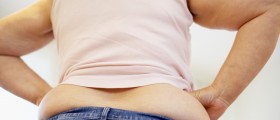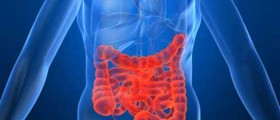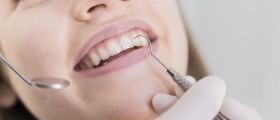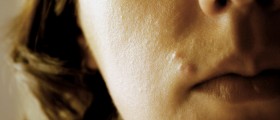Peyronie's disease is a debilitating condition affecting men. In men suffering from Peyronie's disease the curvature of the penis is abnormal and the organ is inadequately bent.
What Causes Peyronie's Disease?
Peyronie's disease is a disease of unknown origin. There is no identified cause why the curvature of the penis changes in abnormal manner.

However, some experts believe that trauma plays a significant role in the onset of scarring of the organ. The penis normally achieves an erection when the corpus cevernosum gets filled with blood. This process develops as a consequence of sexual arousal. The corpus cavernosum is made of elastic tissue which makes enlargement of the organ during erection easy. Still, in case of an injury to the corpus cavernosum the affected tissues get inflamed. One should not worry if the healing process occurs adequately. However, sometimes the tissue may undergo excessive scarring which makes the organ less flexible and changes its curvature.
It is also possible that the condition is genetically inherited. Finally, there have been cases reported that Peyronie's disease may develop as a side effect of certain drugs, but there is no clinical evidence to prove this thesis.
Peyronie's Disease Clinical Characteristics
Scar tissue which forms inside the penis develops in a form of plaques. The plaque usually goes through several stages. Initially, there is a localized swelling with later hardening of the scar and thickening of the entire area. As a result, during erection this scar tissue cannot expand and the organ is bent or curved in an abnormal way. Such inadequate bending may cause pain and discomfort. The pain may reduce in intensity after some period of time, but the abnormal curvature remains.
Peyronie's Disease Treatment Options
If the condition is neither severe nor progressive, it can eventually resolve on its own. On the other hand, severe deformities, especially if they are accompanied by pain/discomfort during erection, must be properly treated.
The most successful way to treat Peyronie's disease is surgical repair. Before the patient undergoes surgery, he should be monitored for approximately 6 month. This time is sufficient enough to estimate whether the disease has progressed or has started to resolve on its own.
In men in whom the disease has led to shortening of the organ surgery is performed on the part that has been affected by scar tissue. In individuals with an adequate penis length and mild to moderate deformity the surgeon operates the side of the organ opposite to the affected one.
Finally, apart from surgical corrections, patients may also benefit from penile implants. This surgery is the most convenient solution if the person is additionally suffering from erectile dysfunction.
New Treatment Techniques
- There is currently limited evidence for the clinical use of stem cells in PD, with all studies restricted to rat models. Overall, these data support positive effects through differing proposed mechanisms of action, including reducing collagen and elastin deposition, reducing fibrosis, and increasing myofibroblast apoptosis. Further clinical studies are needed to confirm the efficacy of stem cell therapy for PD in humans.
- No oral pharmacotherapy is recommended by the American Urological Association (AUA) or the International Consortium of Sexual Medicine (ICSM) because of the lack of robust evidence. In contrast, the European Association of Urology (EAU) suggest that potassium para-aminobenzoate (Potaba) may result in a significant reduction in curvature, plaque size, and pain. Two placebo-controlled randomised controlled studies (RCTs) have shown evidence that Potaba may reduce progression and pain.
- Vitamin E is a fat-soluble, naturally occurring antioxidant that has previously been shown to improve pain, curvature, and erectile function scores (IIEF) and has been utilized in combination therapy with verapamil injections, non-steroidal anti-inflammatories, and herbal antioxidants.
- A recent scientific study has investigated a new model to test potential medical therapies in PD. The team describe an in vitro model that mimics the cellular changes seen in PD. It is well understood that myofibroblasts play a large role in the remodelling of the extracellular matrix and the production of profibrotic mediators and inflammatory cytokines. These cell lines have also been isolated in PD plaques. The authors were able to create a screening assay to assess the effectiveness of multiple treatments on the transformation of fibroblasts to myofibroblasts. Using this innovative model, they assessed the efficacy of 21 commonly studied oral therapies. The only compounds that proved to be effective on the fibroblast model included phosphodiesterase (PDE)-5 inhibitors and tamoxifen. These medications were then tested further in separate testing systems. The authors noted that each medication has the potential to prevent progression of disease in the active phase but is unlikely to reduce the plaque or curvature. They also identified that there was a synergistic effect with the two medications combined compared to either medication alone.
- Pentoxifylline is a non-specific PDE inhibitor that also has some effect in reducing TGF-? tissue levels and therefore may have an antifibrotic role and thereby a therapeutic role in PD. The evidence of its efficacy is limited as a monotherapy; however, there is some evidence to suggest its benefit as a combination treatment.
- Collagenase clostridium histolyticum (CCH) has been studied for use in PD in the experimental field since 1982. Since 2013, CCH has been approved by the United States Food and Drug Administration as well as the European Medicines Agency. Treatment comes in the form of an injection of two collagenases, which act synergistically to cleave tropocollagen. Its use is recommended by the AUA for PD curvature between 30° and 90°, and the EAU guidelines currently advise a grade B recommendation.
- Intralesional verapamil injections are within the recommendations for treatment in the EUA, AUA, and ICSM guidelines. However, their use is supported by overall poor evidence and hence is given a grade C recommendation by all guidelines. Verapamil is a calcium channel blocker that has been shown to interfere with fibroblast proliferation and can decrease collagen deposition by upgrading collagenase activity. There are only two trials comparing verapamil treatment and control subjects.
- Mechanical therapy for PD as a treatment modality generally suffers from a lack of robust, randomized controlled studies. The purported mechanism of action of traction devices is likely to be secondary to cellular mechanotransduction. The mechanical strain on the cell body leads to multiple signal transduction pathways being activated, which is likely to lead to collagen degradation.
- There has been limited research on external shockwave therapy (ESWT) for PD in recent times. Its use is not recommended by AUA, EAU, or ICSM guidelines for the treatment of curvature; however, it may have a use for those with penile pain secondary to PD.

















Your thoughts on this
Loading...